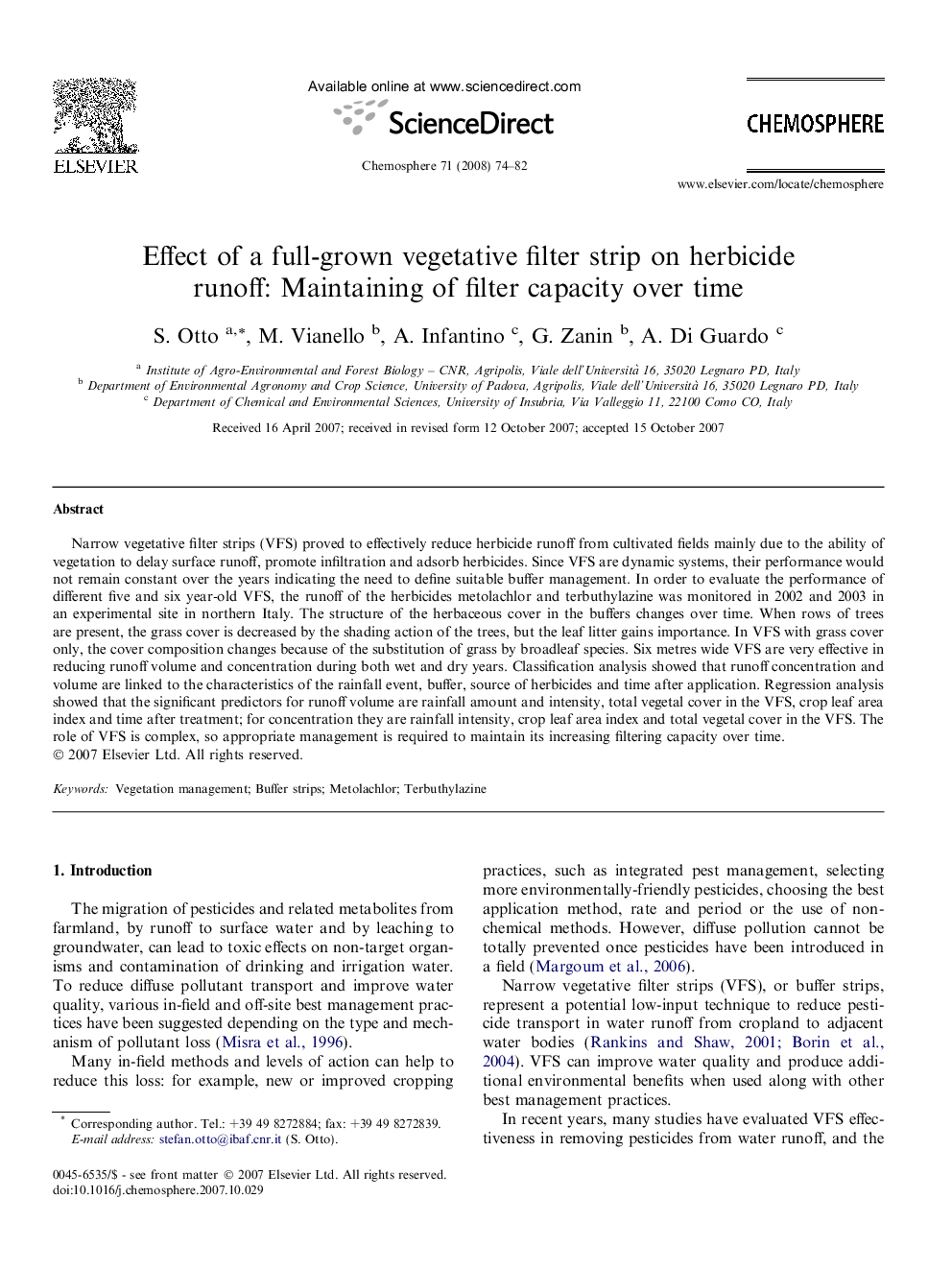| کد مقاله | کد نشریه | سال انتشار | مقاله انگلیسی | نسخه تمام متن |
|---|---|---|---|---|
| 4413999 | 1307697 | 2008 | 9 صفحه PDF | دانلود رایگان |

Narrow vegetative filter strips (VFS) proved to effectively reduce herbicide runoff from cultivated fields mainly due to the ability of vegetation to delay surface runoff, promote infiltration and adsorb herbicides. Since VFS are dynamic systems, their performance would not remain constant over the years indicating the need to define suitable buffer management. In order to evaluate the performance of different five and six year-old VFS, the runoff of the herbicides metolachlor and terbuthylazine was monitored in 2002 and 2003 in an experimental site in northern Italy. The structure of the herbaceous cover in the buffers changes over time. When rows of trees are present, the grass cover is decreased by the shading action of the trees, but the leaf litter gains importance. In VFS with grass cover only, the cover composition changes because of the substitution of grass by broadleaf species. Six metres wide VFS are very effective in reducing runoff volume and concentration during both wet and dry years. Classification analysis showed that runoff concentration and volume are linked to the characteristics of the rainfall event, buffer, source of herbicides and time after application. Regression analysis showed that the significant predictors for runoff volume are rainfall amount and intensity, total vegetal cover in the VFS, crop leaf area index and time after treatment; for concentration they are rainfall intensity, crop leaf area index and total vegetal cover in the VFS. The role of VFS is complex, so appropriate management is required to maintain its increasing filtering capacity over time.
Journal: Chemosphere - Volume 71, Issue 1, March 2008, Pages 74–82